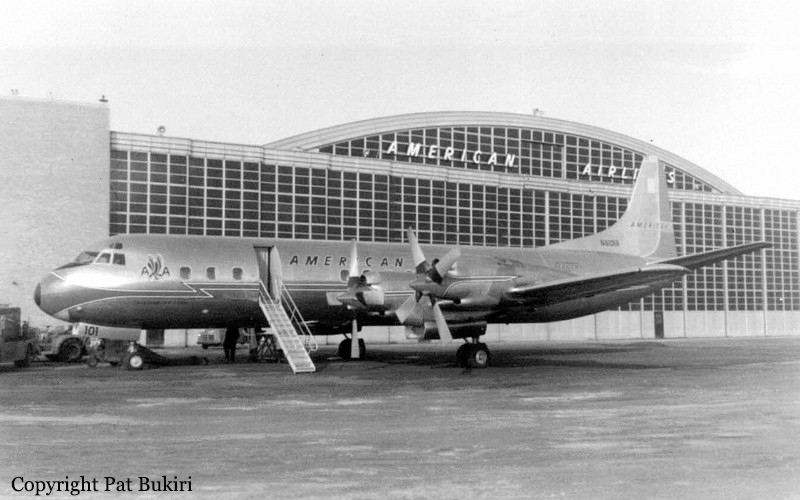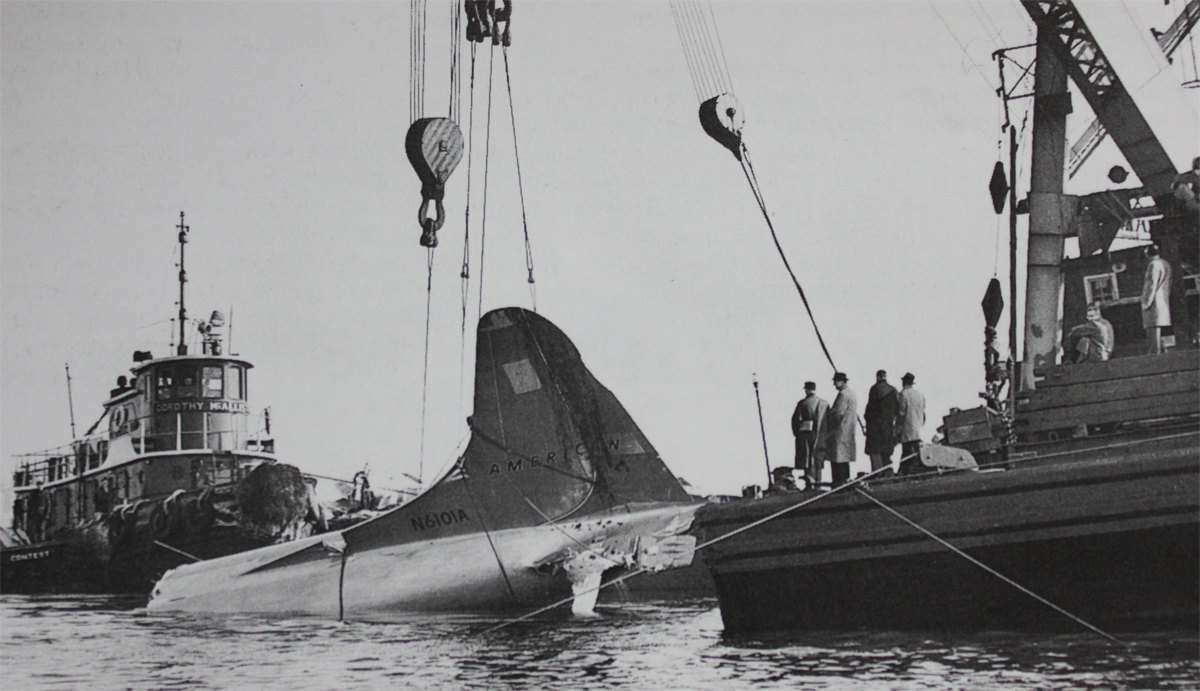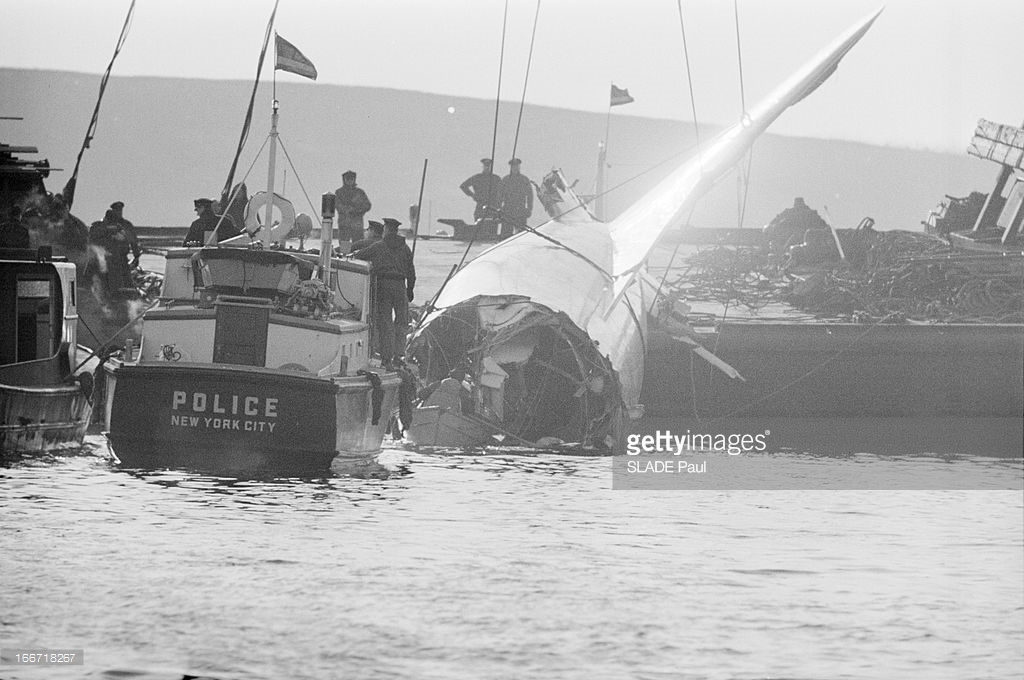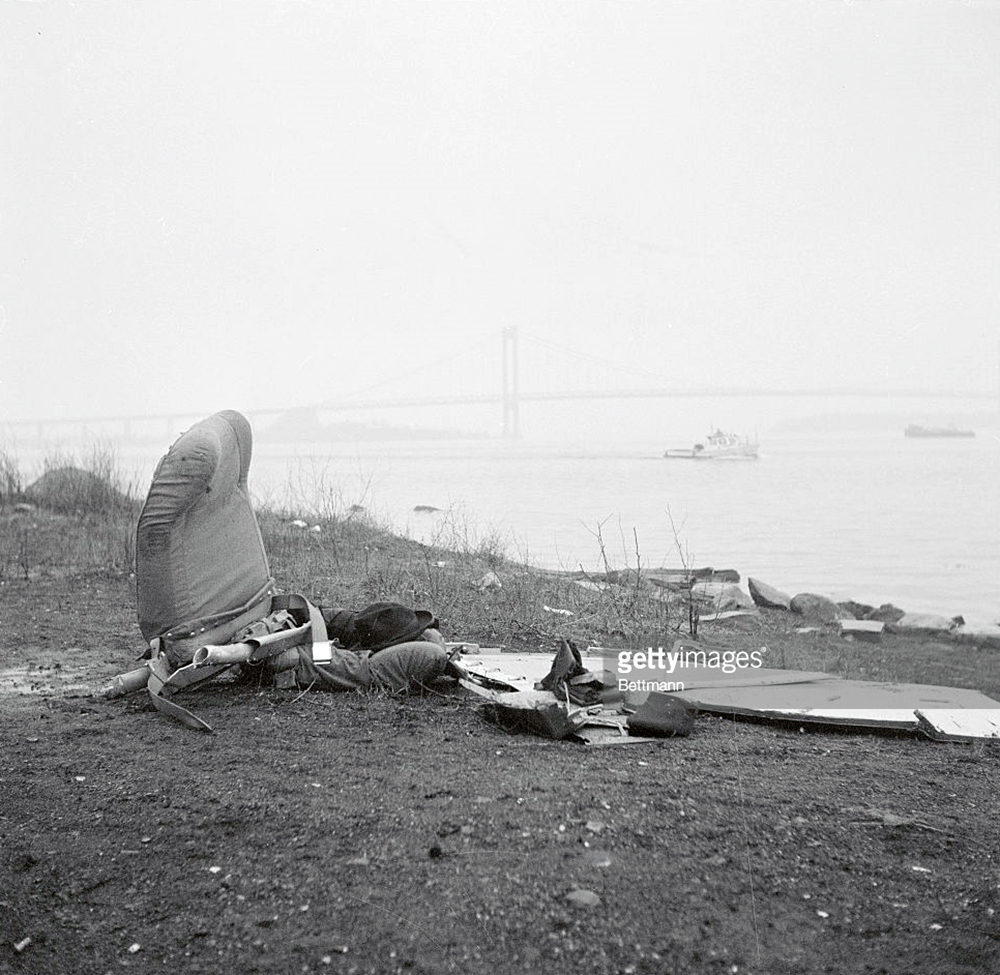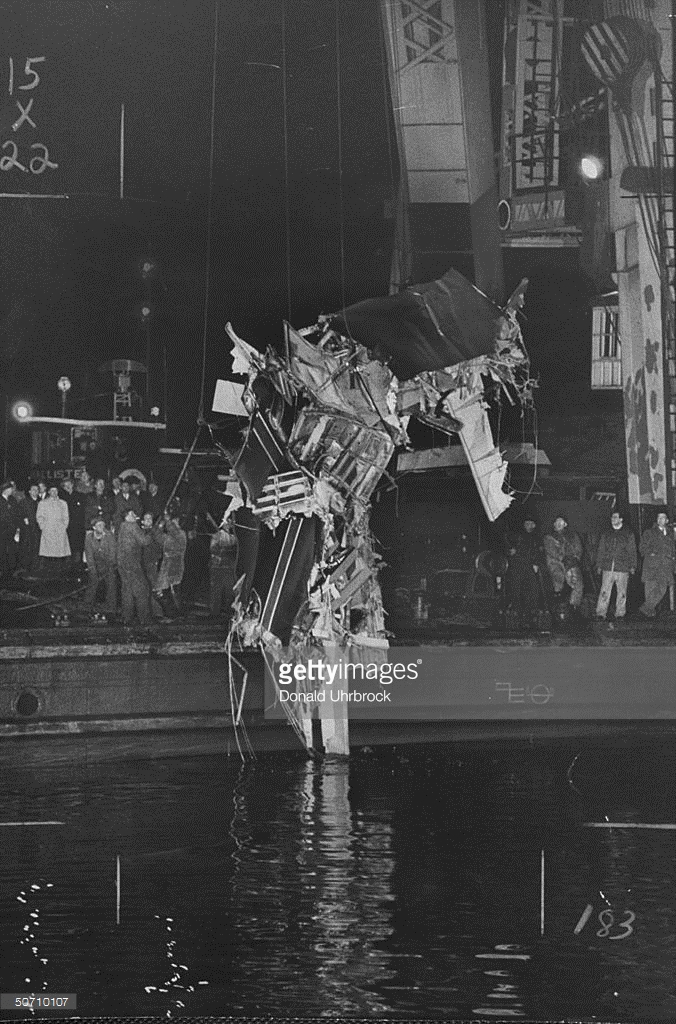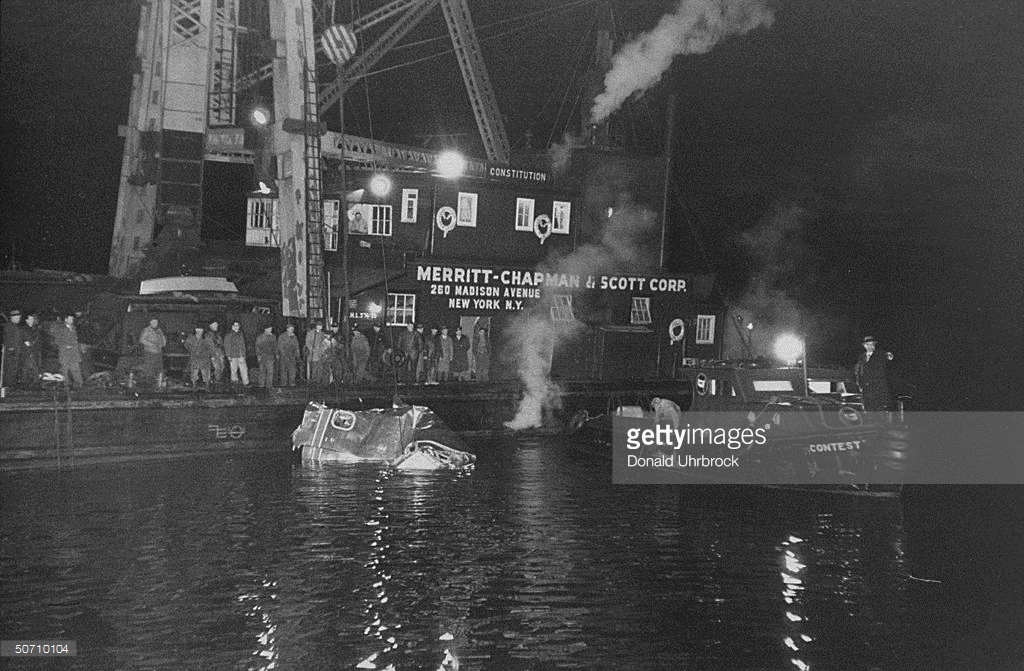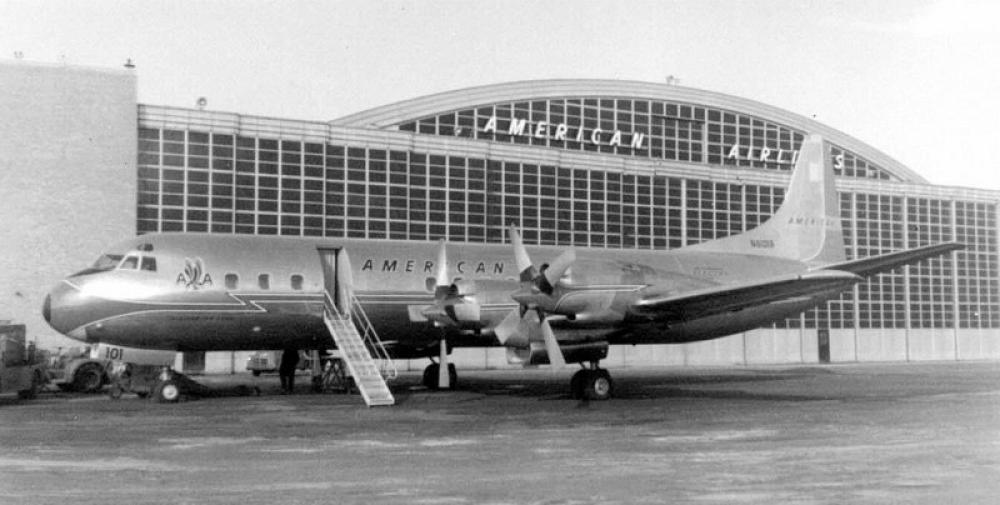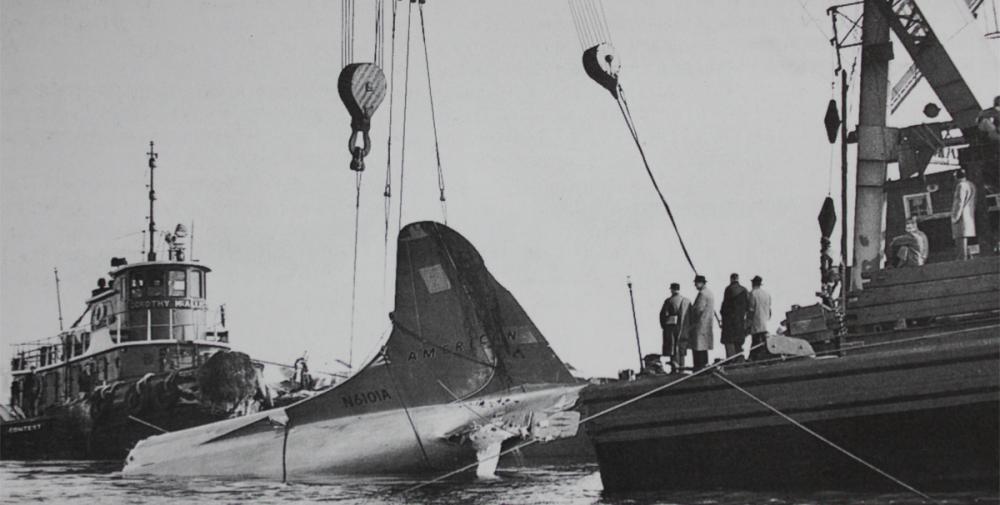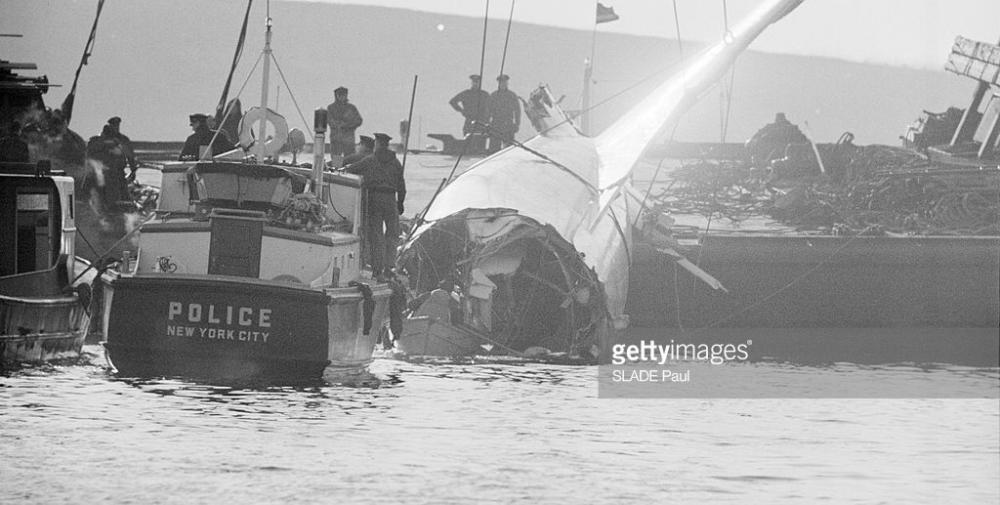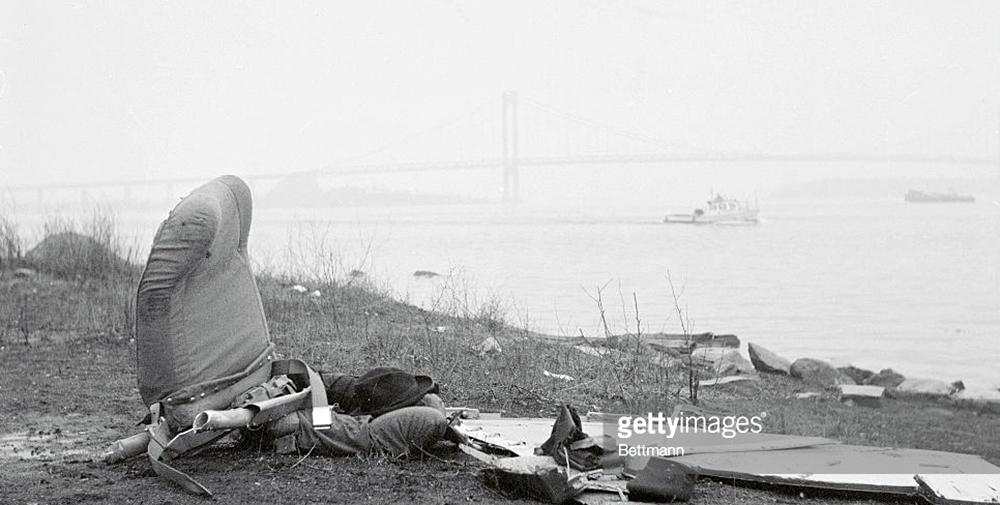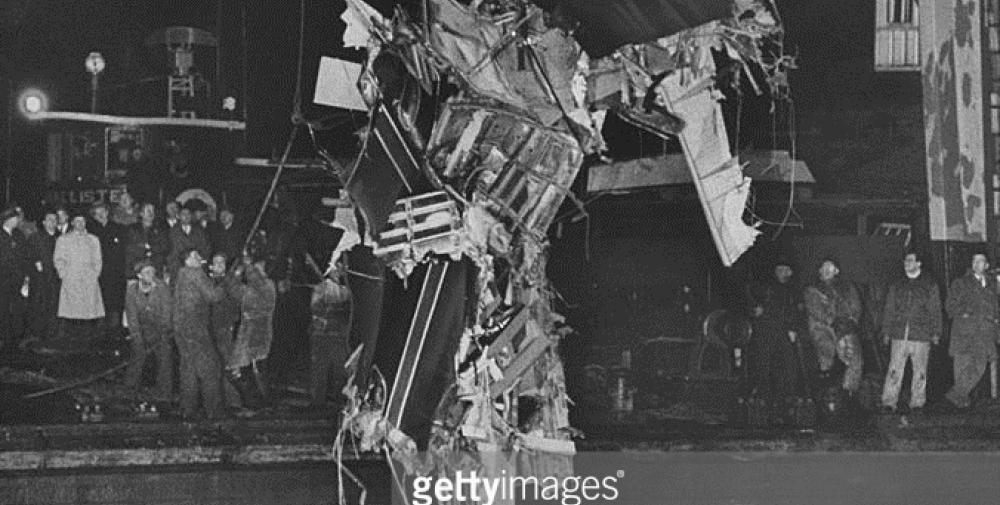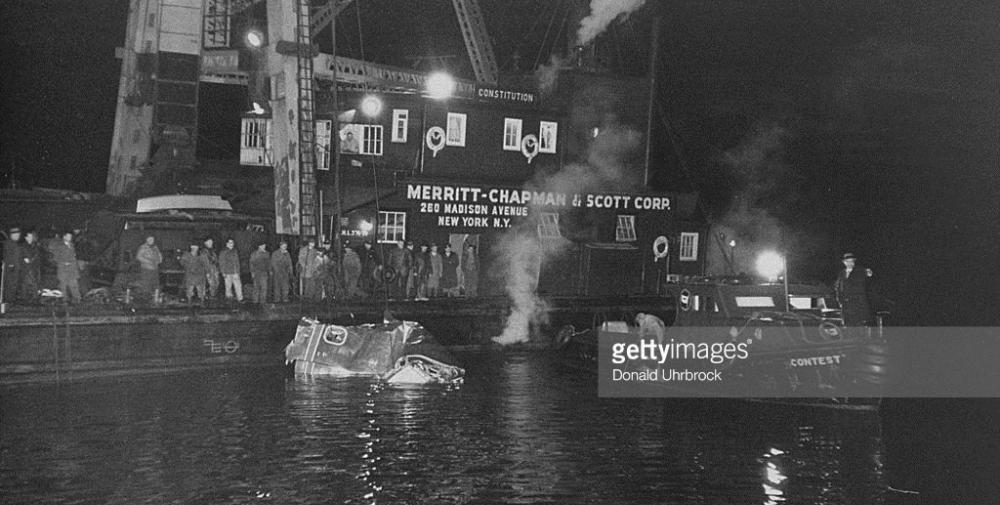Date & Time:
Feb 3, 1959 at 2356 LT
Type of aircraft:
Lockheed L-188 Electra
Registration:
N6101A
Flight Phase:
Landing (descent or approach)
Flight Type:
Scheduled Revenue Flight
Survivors:
Yes
Site:
Lake, Sea, Ocean, River
Schedule:
Chicago – New York
MSN:
1015
YOM:
1958
Flight number:
AA320
Country:
United States of America
Region:
North America
Crew on board:
5
Crew fatalities:
3
Pax on board:
68
Pax fatalities:
62
Other fatalities:
0
Total fatalities:
65
Captain / Total hours on type:
48
Copilot / Total hours on type:
36
Aircraft flight hours:
302
Circumstances:
At approximately 2356LT, the aircraft crashed into the East River while attempting an instrument approach to runway 22 at LaGuardia Airport. There were 73 persons on board, including one infant. The captain and one stewardess were killed; the first officer, flight engineer, and the remaining stewardess survived. Of the 68 passengers, 5 survived. The Board believes that a premature descent below landing minimums was the result of preoccupation of the crew on particular aspects of the aircraft and its environment to the neglect of essential flight instrument references for attitude and height above the approach surface. Contributing factors were found to be: limited experience of the crew with the aircraft type, fealty approach technique in which the autopilot was used in the heading mode to or almost to the surface, erroneous setting of the captain's altimeter, marginal weather in the approach area, possible misinterpretation of altimeter and rate of descent indicator, and sensory illusion with respect to height and attitude resulting from visual reference to the few lights existing in the approach area.
Probable cause:
The Board determines the probable cause of this accident was premature descent below landing minimums which was the result of preoccupation of the crew on particular aspects of the aircraft and its environment to the neglect of essential flight instrument references for attitude and height above the approach surface. Contributing factors were:
- Limited experience of the crew with the aircraft type,
- Faulty approach technique in which the autopilot was used in the heading mode to or almost to the surface,
- Erroneous setting of the captain's altimeter,
- Marginal weather in the approach area,
- Possible misinterpretation of altimeter and rate of descent indicator,
- Sensory illusion with respect to height and attitude resulting from visual reference to the few lights existing in the approach area.
- Limited experience of the crew with the aircraft type,
- Faulty approach technique in which the autopilot was used in the heading mode to or almost to the surface,
- Erroneous setting of the captain's altimeter,
- Marginal weather in the approach area,
- Possible misinterpretation of altimeter and rate of descent indicator,
- Sensory illusion with respect to height and attitude resulting from visual reference to the few lights existing in the approach area.
Final Report:
N6101A.pdf2.28 MB
